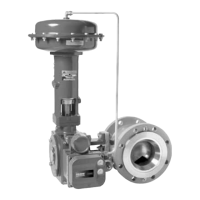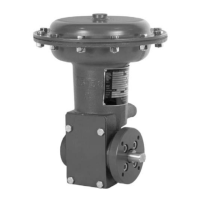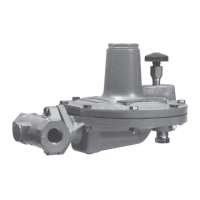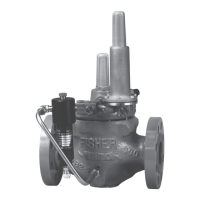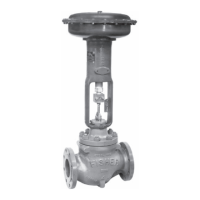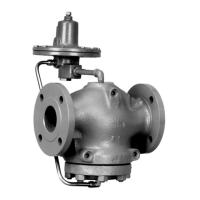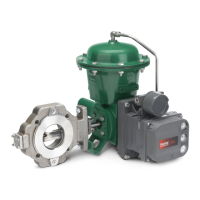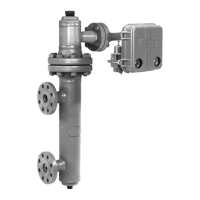Instruction Manual
D100331X012
1066 and 1066SR F & G Actuators
October 2012
4
Installation
When an actuator and valve are shipped together, the actuator is normally mounted on the valve. Follow the valve
instruction manual when installing the control valve in the pipeline. If it is necessary to mount the actuator on the
valve, or if it is necessary to change actuator mounting positions, perform the Actuator Mounting procedure. Because
of the valve travel adjustments required, it is recommended that the valve be removed from the pipeline.
WARNING
To avoid personal injury or property damage caused by bursting of pressure retaining parts, be certain the service
conditions do not exceed the limits given in table 1 or on the nameplate. Use pressure limiting or pressure relieving devices
to prevent the cylinder pressure from exceeding the maximum allowable cylinder operating pressure.
Always wear protective gloves, clothing, and eyewear when performing any installation operations to avoid personal
injury.
Check with your process or safety engineer for any additional measures that must be taken to protect against process
media.
If installing into an existing application, also refer to the WARNING at the beginning of the Maintenance section in this
instruction manual.
Actuator Mounting
Use the following steps to connect a valve and actuator that have been ordered separately, or separated for
maintenance. This procedure can also be performed to change actuator mounting positions. Key numbers are shown
in figure 6 or 7 unless otherwise noted.
WARNING
This WARNING applies specifically to 1066 actuators, and to specially modified 1066SR actuators that apply pressure to the
bottom of the piston (key 3, figures 4 and 5).
To avoid personal injury from the bearing (key 4, figure 3) being forced out of the actuator with sufficient energy to cause
personal injury or property damage, carefully follow the instructions given below.
Do not apply loading pressure to a partially assembled actuator. Do not remove the mounting yoke (key 25, figure 3)
or the travel indicator scale (key 21, figure 3) from the actuator assembly when loading pressure is applied to the
bottom of the piston. The bearing (key 4) could be forced out of the actuator assembly. Depending on the mounting
position, either t he mounting yoke ( key 25) or the travel indicator scale (key 21) retains the bearing (key 4) when
cylinder pressure is applied below the piston.
For mounting positions A and D, the mounting yoke (key 25) holds the bearing in place when pressure is applied below
the piston. In the case of mounting positions B and C, the indicator scale (key 21) holds the bearing in place when
pressure is applied below the piston.
Refer to figure 2 for available mounting posit ions. When mounting on a Vee-Ball V150, V200 or V300 valve, check the
valve manual to determine if it is Series B. Make sure the mounting bracket is located on the correct side of the
actuator to match your application.

